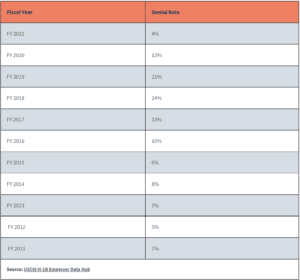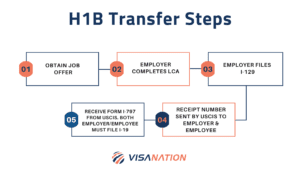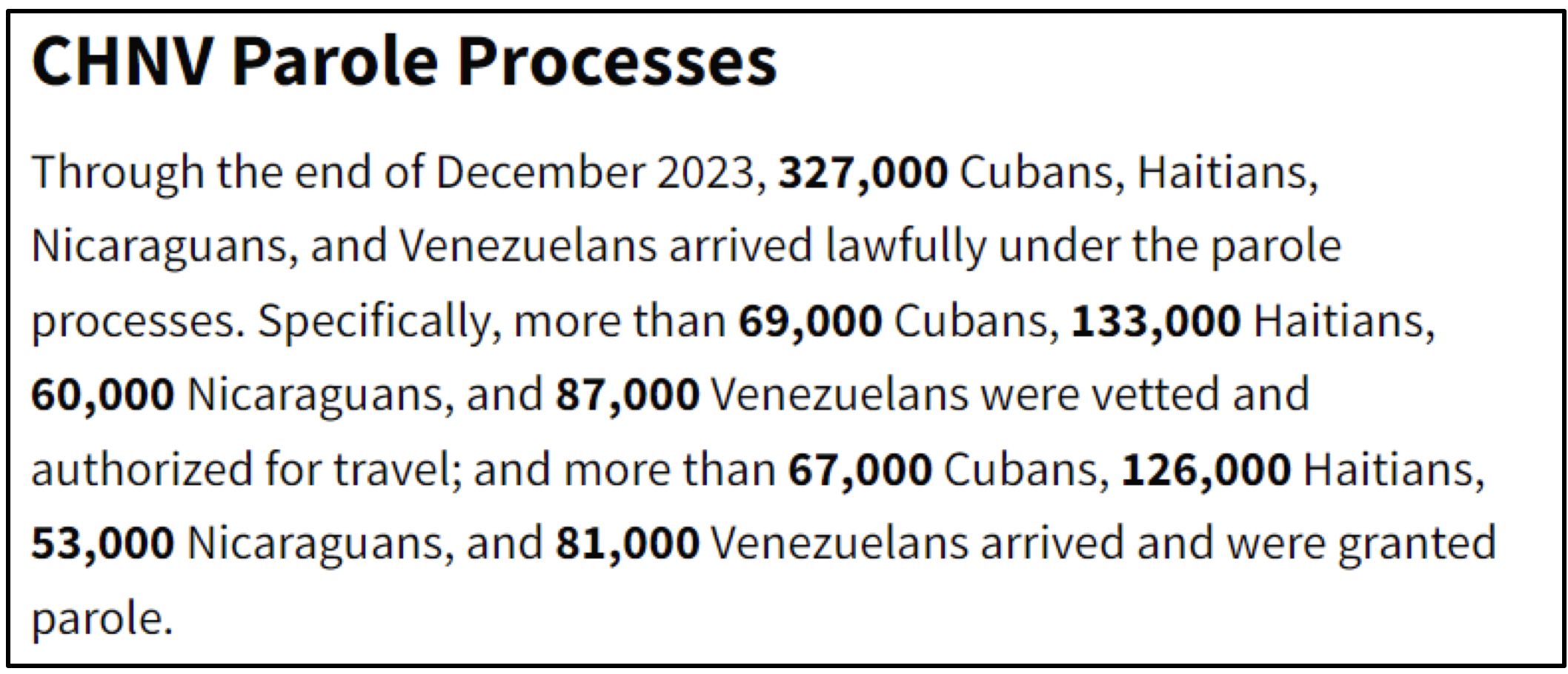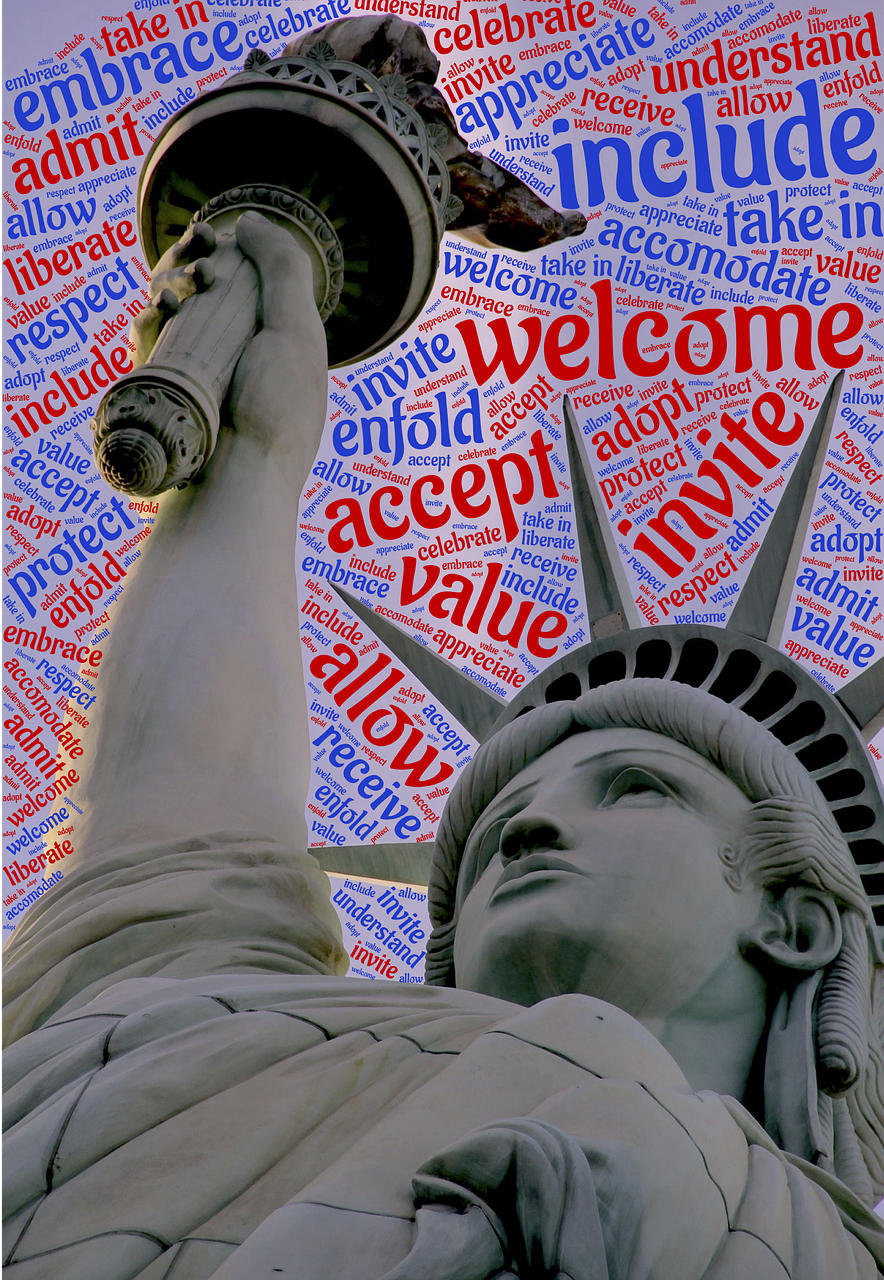Top Rejection Reasons and Alternatives
Recently, there has been a steady decline in the rate of denials on H-1B visa transfer petitions. Reports based on data from USCIS show that the denial rate dropped 4% in FY 2021, a stark contrast to the 24% denial rate in 2018 and 21% in 2019. Industry analysts speculate that the denial rate in FY2020 would have been much higher had Trump’s restrictive policies been upheld in the legal case of ITServe Alliance, Inc. v. United States Citizenship and Immigration Services.
Taking into account that the number of H-1B cap registrations submitted by employers (308,613) in 2022 was up 12% from the prior year, we can see just how much of an impact the administration’s policies were having. In this guide, we explore everything you need to know to avoid having your H-1B transfer denied and what to do if it is denied.
H-1B Transfer
An H-1B visa transfer is the process of changing from one employer to another while still on H-1B status. The H-1B rule allows employees to accept a job offer from another employer in the United States during their stay. However, you cannot start the new employment without first satisfying the labor and immigration requirements through H-1B transfer processing. The procedure can take several months, and you need to complete it carefully to avoid denial. At this stage, you need to be familiar with the H-1B visa transfer procedure.
H-1B Transfer Procedure
The procedure for an H-1B transfer is almost the same as applying for an H-1B visa. The main difference is that there is no visa cap or lottery. Annually, no more than 85,000 H-1B visas are granted to cap-subject petitions, but an H-1B transfer has no such restriction. As many people as are qualified can transfer their H-1B visas every year.
The following are the steps for applying for an H-1B visa transfer:
Get a New Employment Offer
At the time of applying for a transfer, you must have a current employer in the U.S. You also need to have a job offer from another employer that is also in the U.S. If you wish to take the new job, you can then initiate the H-1B visa process. You cannot transfer to another employer without having a job offer.
Labor Condition Application (LCA): To Be Completed By Your Employer
U.S. companies are not permitted to employ H-1B workers without a Labor Condition Application (LCA). To get the LCA, the employer needs to send an application to the U.S. Department of Labor by filling Form ETA 9035E. This document shows the U.S. government that the employer hires legal workers. It also stipulates that the employer treats the foreign workers fairly by paying them the required wages and providing them a suitable working environment.
I-129: to Be Filed By Your Employer
After getting LCA authorization, the employer should submit an I-129 to the USCIS. Once the USCIS receives the petition, a receipt number will be sent to both the employer and employee. After receiving the number, the employee can start working for the new employer. Both parties will get the I-797 form when the petition is approved. And the form will testify that the employee is legally permitted to work for that particular employer.
Additionally, both the employer and employee have to file an I-19—also called the Employment Eligibility Verification form—to the USCIS. This form is to verify the identity and employment authorization of persons hired in the U.S.
H-1B Transfer Documents to Submit to the USCIS
The applicant should submit the following documents to the USCIS:
- Copy of the offer letter issued by the employer
- Copy of passport
- Copy of your current H-1B visa
- Copy of form I-94
- Copy of I-797
- Copy of social security card
- Copy of qualifications (i.e., degrees and certificates)
- Copy of paystubs (2 or 3 previous paystubs)
- Copy of tax returns, if applicable
- Copy of updated resume
- Copy of state license (this applies only to medical practitioners)
Note: Because you already have an H-1B visa, you will not need to file another DS-160 form.
The process of submitting the documents may take about 10 days. After submitting all necessary documents and paying the required fees, wait for a response from USCIS.
H-1B Lottery Overview
The H-1B cap is 85,000. In the first category is the regular quota which permits 65,000 petitions. In the second category is the masters’ quota which reserve an additional 20,000. As part of the Free Trade Agreement 6,800 are set aside for citizens of Singapore and Chile. The employer is responsible for pre-registering the foreign worker into the database. USCIS then conducts the lottery based on the aforementioned allocations. In past years a third round took place since there were insufficient submissions to meet the quota. If you are selected in the lottery, then within 90 days of being selected your employer will need to file the complete petition and submit the filing fees and supporting documents. If the complete petition is approved, then you can being working on October 1st.
Common Reasons for H-1B Transfer Denial in 2022
If you have submitted a petition for an H-1B visa transfer, you may be worried that it will be denied. While working alongside a qualified attorney can help alleviate these fears, it helps to know the possibilities. There are numerous contributing factors for getting your H-1B transfer denied by the United States Citizenship and Immigration Services.
Some of the common reasons for denials that affect both the petitioner (employer) and the beneficiary (employee) are as follows:
1. The Petitioner’s (U.S. Employer) Requirements
Oftentimes, petitions for an H-1B employee are denied based on insufficient submissions demonstrating that the petitioning United States employer is an established and operating entity in the United States with the ability to hire, pay and provide sufficient specialty occupation work to the H-1B employer.
In order to avoid a negative adjudication, it is important for an employer to provide tax documentation, company financial statements, active contracts that demonstrate sufficient specialty occupation work, property lease information and photographs of the premises.
A property lease and photographs will demonstrate that the U.S. employer is an established operating entity and that there is sufficient workspace to accommodate and complete the specialty occupation.
2. The Employee’s Lack of Specialized Knowledge
A key requirement for H-1B approval is providing sufficient proof that the proffered position is a “specialty occupation” that requires a bachelor’s degree or an employee to have “specialized knowledge.” This is a two-prong test that requires the beneficiary to provide evidence that he or she possesses a bachelor’s degree in the field of employment (specialized knowledge).
In addition, the employee must demonstrate that the specialized knowledge he/she possesses is directly related to the job offered.
Furthermore, in addition to providing proof that the employee is the recipient of a bachelor’s degree, it is recommended that applications be supplemented with evidence of the employee’s resume and experience letters from previous employers to avoid unnecessary denials or requests for evidence.
3. Insufficient Proof of Employer/Employee Relationship
An H-1B employer is required to designate a work site or location where the H-1B beneficiary will work. If an employee will be working at an off-site location, USCIS requires the employer to provide proof that the H-1B employee will be managed and “controlled” by the Petitioning Employer and the subcontracting company (third party worksite) shall have no authority over (hire, fire, payment of salary) the H-1B beneficiary.
In order to avoid a denial based on a lack of proof demonstrating a valid employer/employee relationship, you should submit an H-1B application with the following proof/evidence: Work contract agreements between the H-1B petitioner and third-party worksite.
These contractual agreements must clearly articulate that the petitioning employer shall have sole control (hire, fire, payment of salary) of the H-1B beneficiary. Additional evidence can include but is not limited to: information about the type of work to be completed and pay statements directly from the petitioning employer to the beneficiary – establishing a clear chain of command and employer/employee relationship.
4. Insufficient Fees Filed
While this may seem self-explanatory, recent changes to the filing fees can easily catch you off guard and result in getting your H-1B transfer denied. Keeping up-to-date with the current laws and regulations can help you prevent any unnecessary delays or roadblocks.
Firstly, it is important to note that the basic filing fee for the I-129 petition is $460.
The Public Law 114-113 is $4,000 for certain H-1B petitions. This fee only applies if you employ more than 50 employees where more than half are H-1B visa holders.
H-1B Fees
- USCIS Anti-Fraud Fee: $500 (paid by the employer)
- Basic Filing Fee: $460 (paid by the employer)
- ACWIA Education and Training Fee: $750 if less than 25 employees; $1,500 if more than 25 employees (paid by the employer)
- Attorney Fee: Variable
5. Employer Unable to Pay Prevailing Wage
The Department of Labor defines the prevailing wage as the “average wage paid to similarly employed workers in a specific occupation in the area of intended employment.” Employers usually file a prevailing wage request to the National Prevailing Wage Center or use the Online Wage Library to find out what the prevailing wage is for your occupation in your county.
If your employer is unable or unwilling to pay this wage, then you will get your H-1B transfer denied. This is because your wages must not be detrimental to the wages and working conditions of other workers in your area.
6. Past Violations of Immigration Law
It goes without saying that, while your original H-1B petition may have been approved, any violations of immigration law on the part of either you or your employer can cause any transfers or extensions to be denied. This can be because
- You have been considered “out of status”
- You have not maintained the qualifications for an H-1B visa (e.g. no longer working in a specialty position related to your degree)
- You have committed a crime in the United States that makes your immigration status void
- Your employer has fraudulently taken advantage of the immigration system or has otherwise violated immigration law
If you believe that this may be an issue concerning your case, it is very important to work closely with your immigration attorney to determine the best steps to take to help prevent getting your H-1B transfer denied.
7. Improper Delivery
Some of the more common mistakes that petitioners make when filing for an H-1B transfer is sending the documents and payments to the wrong service center or using an un-bonded delivery service.
To avoid this, be sure to check all dates and signatures as well as your assigned service center. You should also refrain from delivering the documents by hand or through any other unofficial method. Always use one of the officially bonded delivery services such as UPS, FedEx, or USPS.
Related Topic: H-1B Visa Transfer Before Stamping
What to Do After Denial
If your petition for an H-1B transfer is denied, there are several steps that can be taken to go around this depending on the reason for the denial:
- Your employer can file a different I-129 petition on your behalf. In order to find supporting evidence to subvert the previous transfer denial, it is best to seek the counsel of a qualified immigration attorney.
- If your transfer petition was denied because of improper documentation or a payment problem, you may be able to refile and seek approval provided that the mistake has been fixed.
- If your employer will not file another petition on your behalf, you may want to consider seeking an employer who will file.
Unfortunately, your denial letter will likely contain a statement that makes appealing your H-1B transfer denial impossible. However, you may be able to file a legal motion to have your case reopened or reconsidered.
- Motion to reopen – this is used when new evidence has come to light and you believe that, if the evaluating officer were to reopen your case with this new evidence, a different decision might be made.
- Motion to reconsider – this is only used if you believe that the evaluating officer was wrong in his or her decision to deny your H-1B transfer.
Keep in mind that these are both delicate legal procedures that should not be attempted without the help of an experienced immigration attorney.
H-1B Denial Grace Period
If you are attempting to transfer your petition and your transfer is denied, you will have until the departure date on your I-94 arrival/departure card. If your employment is terminated before your H-1B validity period is over, you will have a 60-day grace period with which to find new employment, change your status to a new visa, or leave the country.
If you are still in the U.S. after your departure date, you will be at a serious risk of being considered “out of status”, which could result in you being barred from further entry into the U.S.
Transferring from Cap-Exempt to Cap-Subject
One question we often get is this: can someone apply for an H-1B through a cap-exempt employer and, once in the U.S., simply transfer to a cap-subject employer to avoid the lottery? The answer to that question is no.
If you enter the U.S. by petitioning for an H-1B under a cap-exempt employer (such as a university or a government research program), you can only transfer your H-1B status to other cap-exempt employers without counting against the cap. As soon as you attempt to transfer your status to a cap-subject employer, your petition will be entered into the lottery, which means that you need to file the petition on April 1st with everyone else.
Cap-Exempt Employer Requirements
According to USCIS, H-1B cap-exempt employers as those that fit the following criteria:
- Higher education institution
- Non-profit organization associated with a higher education institution
- Non-profit research or government organization
Premium Processing
Fortunately, you can use premium processing for your H-1B transfer petition. By filing an I-907 along with your H-1B petition, you can shorten your petition’s processing time from the usual average of six months to just 15 calendar days. This service is completely optional and you will also be responsible for the $2,500 fee.
H-1B Extension Denial and Rejection
Getting your H-1B transfer denied can be difficult and negatively impact your life in the U.S., but at least you will still have your status. Petitioning for an extension or renewal and encountering a denial can result in you having to leave the country.
The number one tip for filing for an extension is to file long before your H-1B is set to expire. This way, if your extension is denied or rejected, you will not be considered out of status, which could result in long-term bars from re-entry. However, if you encounter an extension denial, you will need to find a new solution or leave the country when your validation period is over.
To avoid an H-1B extension denial, you will need to ensure that you have not yet reached the six-year normal maximum stay under H-1B status. If you are only approaching the 3-year mark, then there are some other factors that could have contributed to your denial:
- Your job has changed and is no longer considered a specialty position
- Your relationship with your employer has changed so that you are no longer in a legitimate employer-employee relationship. For example, if you were hired by a staffing agency and are now working for a client of that agency.
- You have committed a crime in the U.S. or otherwise violated your status.
Denial vs Rejection
One thing to understand is that there is an important difference between the terms “denial” and “rejection” in immigration law. The USCIS adjudicates petitions with a two-pronged approach. During the first prong, an evaluating officer will look over your case to make sure that all of the information is present and correct on the petition, that all fees are sufficient and correctly filed, and that all necessary supporting documents are present (e.g. passport copy). If your petition does not pass this prong, it will likely be rejected.
During the second prong, the officer will examine your case to see if it merits an H-1B visa transfer or extension based on whether you and your employer meet the necessary requirements through the supporting documents and petition. If your petition does not pass this prong, it will likely be denied.
Essentially, rejections happen when there is a simple or technical error with your petition. The answer is to simply fix the error and refile. On the other hand, denials happen when the evaluating officer does not believe that your case merits an H-1B transfer or extension. To fix a denial, you will need to either solve the issue that caused the denial, petition with a different employer or file a motion to reopen or reconsider.
Frequently Asked Questions
Below you will find answers to the most commonly asked questions.
Can You Get Your H-1B Transfer Denied After LCA Approval?
The approval of a Labor Certification Application (LCA) is based on the Department of Labor while your transfer petition is adjudicated by the USCIS. Because of this, one entity is not contingent on the other. This means that one can be approved while the other is denied.
If you find your H-1B transfer denied after your LCA has been approved, then this may be an issue with how you have maintained your status in the past. This can include violations of immigration or civil law by either you or your employer prior to your H-1B transfer petition.
Can I Continue Working after H-1B Transfer Denial?
Unfortunately, you cannot continue working for the new employer once the transfer petition is denied. Though it is possible to start working with the new employer the moment the USCIS receives the petition and sends you a receipt number as confirmation. It is even possible to have worked for weeks or months before a decision is finally made on your case. If your case is approved, then you can continue your job with the employer.
However, if your H-1B transfer petition is denied, you will have to stop working as soon as you get the notification of the H-1B transfer denial. In this scenario, you no longer have a valid H-1B status to be lawfully employed. This is why it is better to always wait for approval before moving from one employer to another. However, if you still have a valid H-1B status from the previous application, you may consider reaching out to your former employer to see if you could go back to your previous job.
Do I need to get permission from my current employer to transfer?
You are not required to get permission from your current employer to transfer to another one. You are, however, bound by any contractual agreement or non-compete agreement if you signed one with your current employer.
Can I submit the new H-1B transfer petition to USCIS myself (as the employee)?
No, the new employer will have to do it.
What date can I start working with the new employer?
You can begin on the date listed on the H-1B transfer petition filed with USCIS. Once your new employer receives the receipt from USCIS, you are cleared to start!







